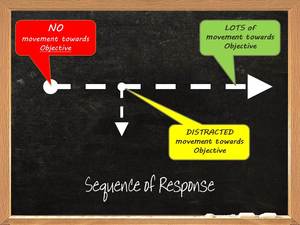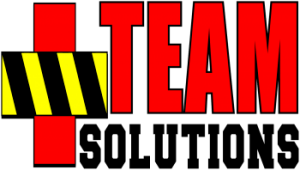Little Timmy is missing after the tornado and is reportedly trapped in the collapsed building. He is likely running out of air, viability and hope. A team of searchers is rapidly searching void spaces in the collapsed building using high-tech camera’s that extend into cracks to detect survivors on the inside. One searcher sees a motionless shape that could be a hand, blanketed in pulverized concrete dust. A second searcher thinks he sees what could be a human ear…
Do they keep looking and analyzing … or start digging?
I share similar conundrums with some of my clients to illustrate the role of strategic decision-making in potentially life affirming moments like this. Perhaps surprisingly, most folks initially want to be more sure – as in 100% – of what they see before committing the resources needed to successfully rescue whatever or whomever is in that hole. Some want to look longer, try a different camera, interview relatives, etc.
Ultimately though, getting stuck on the analysis seldom adds as much value to Little Timmy’s life as grabbing a shovel and digging does.
Simply, if the objective is to save Little Timmy’s life, then all actions performed should directly support that in a meaningful way. And if we can get behind that idea, then why and how does that concept get so boogered up elsewhere?
Here’s a simple graphic to explain how the sequence of response can help us – or hurt us:

Now let’s try a different scenario:
The regional office wants to gain market share. To do so, they must increase revenue at least $250,000 more than the previous quarter in order to accomplish that objective. Management distributes cutesy campaign shirts, hangs banners and calls ‘goal setting’ meetings. Sales people attend meetings, buy customer lists and host focus groups. Support staff post to Facebook, design fancy analytic programs and of course attend meetings.
How fast and purposeful is their journey going to be along the sequence of response?
Distractions can of course come in many forms. Over analysing, excessive chatter and unmerited preparatory work are common. And while those can surely be justified by many silver-tongued and/or ill-informed managers, there remains very little meaningful progress towards the objective.
Objectives don’t have to be gnarly or esoteric things either. But they do need a commitment in order for our actions to have enough fuel to reach the finish line.
Whether our objective is to save Little Timmy, to increase sales or to climb Mt. Kilimanjaro there are as many actions that move us along the Sequence of Response as there are actions that can distract us. To bolster our rate of success, we must start with an informed series of strategic objectives and then apply a careful balance of linear and nonlinear brain power to achieve them.
Therefore, while the sequence of response is linear, the strategy behind those actions shouldn’t be.
For example, our strategy may be to “do the most good for the most people as quickly and as safely as possible”. To accomplish that however, it may involve constantly reviewing, shifting or even duplicating what defines the finish line of our response sequence. It may start with “save Little Timmy at 123 Main Street”, but as intelligence is gathered it may be adjusted to “save the Smith and Jones Families at 456 Elm Street” first since we can help more people at one time (remember our objective?).
So while the actions (sequence of response) involved in rescuing someone may be similar (linear), the determinations as to the “what” and the “why” are very strategic (objectives).
You smellin’ what I’m cookin’ now?
Before you host your next meeting, re-evaluate your strategic objectives and measure them against the desired outcome of the meeting. Unless they fit together like a peanut butter and jelly … consider rescheduling your meeting until the sequence of actions from where you are to where you want to be is a clear path.
Little Timmy will appreciate it.
